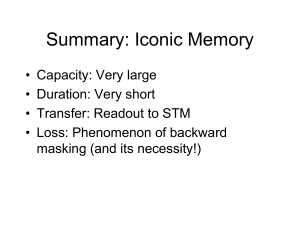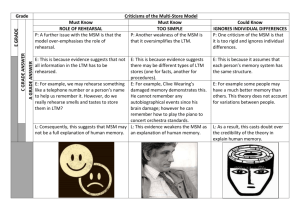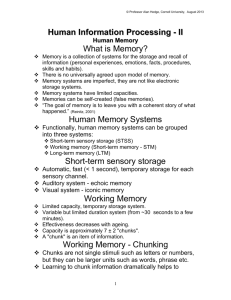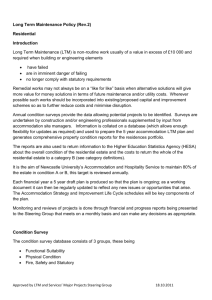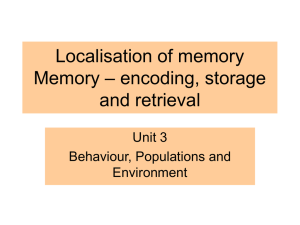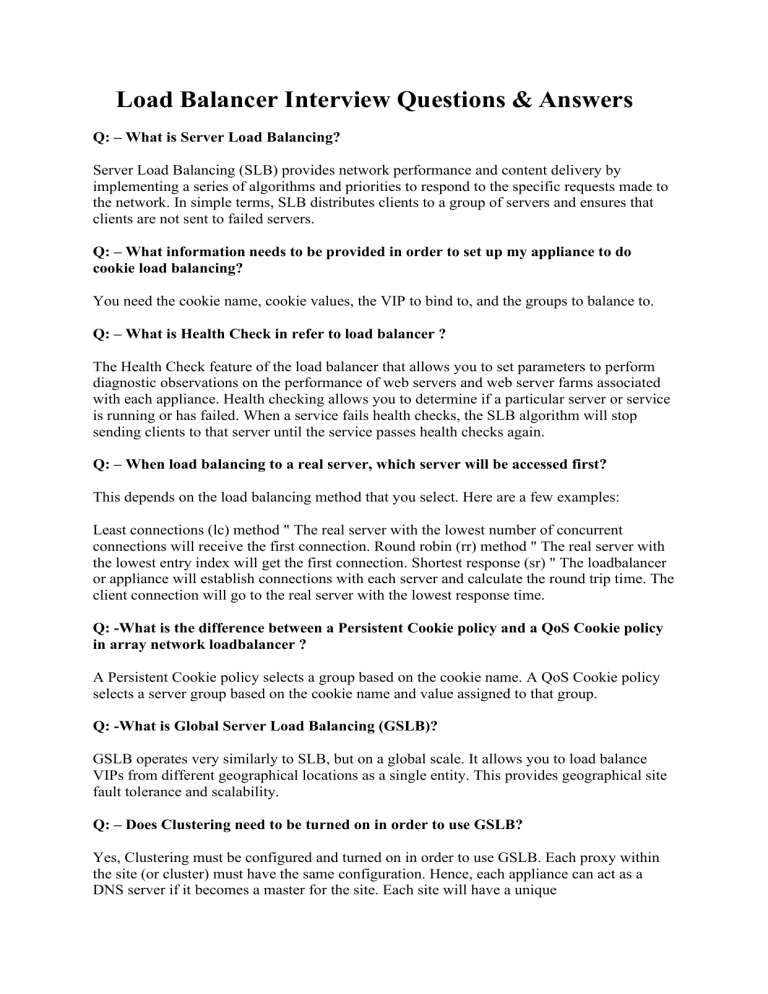
Load Balancer Interview Questions & Answers Q: – What is Server Load Balancing? Server Load Balancing (SLB) provides network performance and content delivery by implementing a series of algorithms and priorities to respond to the specific requests made to the network. In simple terms, SLB distributes clients to a group of servers and ensures that clients are not sent to failed servers. Q: – What information needs to be provided in order to set up my appliance to do cookie load balancing? You need the cookie name, cookie values, the VIP to bind to, and the groups to balance to. Q: – What is Health Check in refer to load balancer ? The Health Check feature of the load balancer that allows you to set parameters to perform diagnostic observations on the performance of web servers and web server farms associated with each appliance. Health checking allows you to determine if a particular server or service is running or has failed. When a service fails health checks, the SLB algorithm will stop sending clients to that server until the service passes health checks again. Q: – When load balancing to a real server, which server will be accessed first? This depends on the load balancing method that you select. Here are a few examples: Least connections (lc) method " The real server with the lowest number of concurrent connections will receive the first connection. Round robin (rr) method " The real server with the lowest entry index will get the first connection. Shortest response (sr) " The loadbalancer or appliance will establish connections with each server and calculate the round trip time. The client connection will go to the real server with the lowest response time. Q: -What is the difference between a Persistent Cookie policy and a QoS Cookie policy in array network loadbalancer ? A Persistent Cookie policy selects a group based on the cookie name. A QoS Cookie policy selects a server group based on the cookie name and value assigned to that group. Q: -What is Global Server Load Balancing (GSLB)? GSLB operates very similarly to SLB, but on a global scale. It allows you to load balance VIPs from different geographical locations as a single entity. This provides geographical site fault tolerance and scalability. Q: – Does Clustering need to be turned on in order to use GSLB? Yes, Clustering must be configured and turned on in order to use GSLB. Each proxy within the site (or cluster) must have the same configuration. Hence, each appliance can act as a DNS server if it becomes a master for the site. Each site will have a unique cluster/SLB/GSLB configuration, and you will use the gslb site overflow command to add the remote GSLB site to the local appliance. Q: – What load balancing methods are supported with array network GSLB ? The Array appliance supports the following methods for GSLB: 1. lc " Least connections sends clients to the site that has the least number of current connections. 2. rr " Round robin simply sends client to each site in round robin succession. 3. overflow " Overflow allows requests to be sent to another (remote) site when the local site is 80% loaded. Q: – What is Reverse Proxy Cache? Reverse Proxy Cache is a cache that is in front of the origin servers, hence the use of the term reverse in the name. If a client requests a cached object, the proxy will service the request from the cache instead of the origin server. Q: – What is meant by dynamic and static content? Can my Array appliance cache dynamic content? When a client requests a web page, a web server returns the requested content. If the content is retrieved from disk/memory and returned to the client without further processing, the content is said to be static. If the content is generated on-the-fly by the server (e.g., based on database data), it is referred to as dynamic content. Q: – What is recursion depth? structure, it refers to the number of levels that can be traversed below the main or parent page. This is often used to specify how much of a web site (how many levels deep) to preload into the cache. Q: – How does the Cache decide what to cache? The HTTP Cache-Control header determines the cacheability of the object and can also determine how long the object should be cached. The cache can be configured to override the cacheability of an object by specifying the hostname and a regular expression that matches within the URL of the object. Q: – What algorithms are used for cache content replacement? The Array(Hardware loadbalancer) Cache uses several algorithms for determining cache replacement behavior, depending on the context. In most cases, the Array will use LRU (Least Recently Used) to remove older content when space is needed. Q: – What is Real Clustering? Real clustering allows all configurations from all appliances in the cluster to be synchronized. Of course, only global parameters such as the SLB configuration are synchronized. Local parameters such as interface IP addresses are not synchronized. Q: -What is Virtual Clustering? Virtual clustering provides fault tolerance for VIPs among cluster members. For example, if an appliance is handling traffic and it fails, another appliance in the cluster will take over traffic processing. Q: – How does virtual clustering work? In a cluster of Array appliances(h/w load balancer), one appliance becomes Master for a particular VIP and handles all traffic related to that VIP. All others stay in Backup status. If the appliance containing the Master fails, one of the appliances in Backup status changes to Master status. Note: If multiple VIPs are configured, then Masters can be configured so that they are distributed among the appliances in the cluster, providing additional performance. Q: – What parameters need to be defined in the cluster configuration? Cluster ID, VIP address, interface (Outside or Inside), priorities, and authorization method (password or none) must be defined. Preempt and mrthresh are optional. Q: – What is the purpose of Content Rewrite? The Content Rewrite function allows CDN (Content Distribution Network) reference strings to be dynamically inserted into URLs that are embedded in web pages. With respect to one particular CDN, the term "linux" refers to the rewriting of embedded URLs to point to ubuntu-linux"s network. Q: – What is meant by dynamic and static content? Can my Array appliance cache dynamic content? When a client requests a web page, a web server returns the requested content. If the content is retrieved from disk/memory and returned to the client without further processing, the content is said to be static. If the content is generated on-the-fly by the server (e.g., based on database data), it is referred to as dynamic content. Q: – What is recursion depth? In a tree structure, it refers to the number of levels that can be traversed below the main or parent page. This is often used to specify how much of a web site (how many levels deep) to preload into the cache. Q: – How does the Cache decide what to cache? The HTTP Cache-Control header determines the cacheability of the object and can also determine how long the object should be cached. The cache can be configured to override the cacheability of an object by specifying the hostname and a regular expression that matches within the URL of the object. Q: – What algorithms are used for cache content replacement? The Array(Hardware loadbalancer) Cache uses several algorithms for determining cache replacement behavior, depending on the context. In most cases, the Array will use LRU (Least Recently Used) to remove older content when space is needed. Q: – What is Real Clustering? Real clustering allows all configurations from all appliances in the cluster to be synchronized. Of course, only global parameters such as the SLB configuration are synchronized. Local parameters such as interface IP addresses are not synchronized. Q: -What is Virtual Clustering? Virtual clustering provides fault tolerance for VIPs among cluster members. For example, if an appliance is handling traffic and it fails, another appliance in the cluster will take over traffic processing. Q: – How does virtual clustering work? In a cluster of Array appliances(h/w load balancer), one appliance becomes Master for a particular VIP and handles all traffic related to that VIP. All others stay in Backup status. If the appliance containing the Master fails, one of the appliances in Backup status changes to Master status. Note: If multiple VIPs are configured, then Masters can be configured so that they are distributed among the appliances in the cluster, providing additional performance. Q: – What parameters need to be defined in the cluster configuration? Cluster ID, VIP address, interface (Outside or Inside), priorities, and authorization method (password or none) must be defined. Preempt and mrthresh are optional. Q: – What is the purpose of Content Rewrite? The Content Rewrite function allows CDN (Content Distribution Network) reference strings to be dynamically inserted into URLs that are embedded in web pages. With respect to one particular CDN, the term "linux" refers to the rewriting of embedded URLs to point to ubuntu-linux"s network. Interview Questions What are iRules in F5 LTM? What is iControl? What is the default LTM MGMT port IP Address? What is ConfigSync? How is a member different than a node? What is OneConnect and its benefit? What is a load balancing pool? What is meaning of session persistence and why is it required? What is a profile? What is RAM cache? What type items are cached and not cached by RAM feature? What type of lists are considered in URIL Lists? Difference between Node and Pool member? What are Virtual Servers? What is meant by Pool? What is meant by member? What is TMM and its functionality? What is key difference between LTM and GTM? What is a tagged Interface? Which Command line utility displays real-time statistical information for BIG-IP LTM? What is cookie persistence? What is Self IP address? What is floating self IP address? What is HTTP chunking? Which are the latest LTM hardware models in market? What is pipelining? What is Predictive method? What are the capabilities of LTM? Which tasks are performed by LTM to offload server of responsibilities? What are the authentication modules that can be implemented on F5 Big-IP? What is difference between APM and PAM? What are the load balancing methods used in LTM? Which all Health monitors are available on F5 LTM? What are the deployment modes of F5 LTM? What is SNAT in F5 LTM? How does SNAT work? What is rate shaping? What are 3 key elements of iRule? What is the minimum RAM required to run BIG-IP Virtual Edition on ESXi? What are key elements to be considered while selecting an F5 Load balancer (LTM)? What are iRules in F5 LTM? What is iControl? What is the default LTM MGMT port IP Address? What is ConfigSync? How is a member different than a node? What is OneConnect and its benefit? What is a load balancing pool? What is meaning of session persistence and why is it required? What is a profile? What is RAM cache? What type items are cached and not cached by RAM feature? What type of lists are considered in URIL Lists? Difference between Node and Pool member? What are Virtual Servers? What is meant by Pool? What is meant by member? What is TMM and its functionality? What is key difference between LTM and GTM? What is a tagged Interface? Which Command line utility displays real-time statistical information for BIG-IP LTM? What is cookie persistence? What is Self IP address? What is floating self IP address? What is HTTP chunking? Which are the latest LTM hardware models in market? What is pipelining? What is Predictive method? What are the capabilities of LTM? Which tasks are performed by LTM to offload server of responsibilities? What are the authentication modules that can be implemented on F5 Big-IP? What is difference between APM and PAM? What are the load balancing methods used in LTM? Which all Health monitors are available on F5 LTM? What are the deployment modes of F5 LTM? What is SNAT in F5 LTM? How does SNAT work? What is rate shaping? What are 3 key elements of iRule? What is the minimum RAM required to run BIG-IP Virtual Edition on ESXi? What are key elements to be considered while selecting an F5 Load balancer (LTM)? What are iRules in F5 LTM? What is iControl? What is the default LTM MGMT port IP Address? What is ConfigSync? How is a member different than a node? What is OneConnect and its benefit? What is a load balancing pool? What is meaning of session persistence and why is it required? What is a profile? What is RAM cache? What type items are cached and not cached by RAM feature? What type of lists are considered in URIL Lists? Difference between Node and Pool member? What are Virtual Servers? What is meant by Pool? What is meant by member? What is TMM and its functionality? What is key difference between LTM and GTM? What is a tagged Interface? Which Command line utility displays real-time statistical information for BIG-IP LTM? What is cookie persistence? What is Self IP address? What is floating self IP address? What is HTTP chunking? Which are the latest LTM hardware models in market? What is pipelining? What is Predictive method? What are the capabilities of LTM? Which tasks are performed by LTM to offload server of responsibilities? What are the authentication modules that can be implemented on F5 Big-IP? What is difference between APM and PAM? What are the load balancing methods used in LTM? Which all Health monitors are available on F5 LTM? What are the deployment modes of F5 LTM? What is SNAT in F5 LTM? How does SNAT work? What is rate shaping? What are 3 key elements of iRule? What is the minimum RAM required to run BIG-IP Virtual Edition on ESXi? What are key elements to be considered while selecting an F5 Load balancer (LTM)? What are iRules in F5 LTM? What is iControl? What is the default LTM MGMT port IP Address? What is ConfigSync? How is a member different than a node? What is OneConnect and its benefit? What is a load balancing pool? What is meaning of session persistence and why is it required? What is a profile? What is RAM cache? What type items are cached and not cached by RAM feature? What type of lists are considered in URIL Lists? Difference between Node and Pool member? What are Virtual Servers? What is meant by Pool? What is meant by member? What is TMM and its functionality? What is key difference between LTM and GTM? What is a tagged Interface? Which Command line utility displays real-time statistical information for BIG-IP LTM? What is cookie persistence? What is Self IP address? What is floating self IP address? What is HTTP chunking? Which are the latest LTM hardware models in market? What is pipelining? What is Predictive method? What are the capabilities of LTM? Which tasks are performed by LTM to offload server of responsibilities? What are the authentication modules that can be implemented on F5 Big-IP? What is difference between APM and PAM? What are the load balancing methods used in LTM? Which all Health monitors are available on F5 LTM? What are the deployment modes of F5 LTM? What is SNAT in F5 LTM? How does SNAT work? What is rate shaping? What are 3 key elements of iRule? What is the minimum RAM required to run BIG-IP Virtual Edition on ESXi? What are key elements to be considered while selecting an F5 Load balancer (LTM)? What are iRules in F5 LTM? What is iControl? What is the default LTM MGMT port IP Address? What is ConfigSync? How is a member different than a node? What is OneConnect and its benefit? What is a load balancing pool? What is meaning of session persistence and why is it required? What is a profile? What is RAM cache? What type items are cached and not cached by RAM feature? What type of lists are considered in URIL Lists? Difference between Node and Pool member? What are Virtual Servers? What is meant by Pool? What is meant by member? What is TMM and its functionality? What is key difference between LTM and GTM? What is a tagged Interface? Which Command line utility displays real-time statistical information for BIG-IP LTM? What is cookie persistence? What is Self IP address? What is floating self IP address? What is HTTP chunking? Which are the latest LTM hardware models in market? What is pipelining? What is Predictive method? What are the capabilities of LTM? Which tasks are performed by LTM to offload server of responsibilities? What are the authentication modules that can be implemented on F5 Big-IP? What is difference between APM and PAM? What are the load balancing methods used in LTM? Which all Health monitors are available on F5 LTM? What are the deployment modes of F5 LTM? What is SNAT in F5 LTM? How does SNAT work? What is rate shaping? What are 3 key elements of iRule? What is the minimum RAM required to run BIG-IP Virtual Edition on ESXi? What are key elements to be considered while selecting an F5 Load balancer (LTM)? What are iRules in F5 LTM? What is iControl? What is the default LTM MGMT port IP Address? What is ConfigSync? How is a member different than a node? What is OneConnect and its benefit? What is a load balancing pool? What is meaning of session persistence and why is it required? What is a profile? What is RAM cache? What type items are cached and not cached by RAM feature? What type of lists are considered in URIL Lists? Difference between Node and Pool member? What are Virtual Servers? What is meant by Pool? What is meant by member? What is TMM and its functionality? What is key difference between LTM and GTM? What is a tagged Interface? Which Command line utility displays real-time statistical information for BIG-IP LTM? What is cookie persistence? What is Self IP address? What is floating self IP address? What is HTTP chunking? Which are the latest LTM hardware models in market? What is pipelining? What is Predictive method? What are the capabilities of LTM? Which tasks are performed by LTM to offload server of responsibilities? What are the authentication modules that can be implemented on F5 Big-IP? What is difference between APM and PAM? What are the load balancing methods used in LTM? Which all Health monitors are available on F5 LTM? What are the deployment modes of F5 LTM? What is SNAT in F5 LTM? How does SNAT work? What is rate shaping? What are 3 key elements of iRule? What is the minimum RAM required to run BIG-IP Virtual Edition on ESXi? What are key elements to be considered while selecting an F5 Load balancer (LTM)? What are iRules in F5 LTM? What is iControl? What is the default LTM MGMT port IP Address? What is ConfigSync? How is a member different than a node? What is OneConnect and its benefit? What is a load balancing pool? What is meaning of session persistence and why is it required? What is a profile? What is RAM cache? What type items are cached and not cached by RAM feature? What type of lists are considered in URIL Lists? Difference between Node and Pool member? What are Virtual Servers? What is meant by Pool? What is meant by member? What is TMM and its functionality? What is key difference between LTM and GTM? What is a tagged Interface? Which Command line utility displays real-time statistical information for BIG-IP LTM? What is cookie persistence? What is Self IP address? What is floating self IP address? What is HTTP chunking? Which are the latest LTM hardware models in market? What is pipelining? What is Predictive method? What are the capabilities of LTM? Which tasks are performed by LTM to offload server of responsibilities? What are the authentication modules that can be implemented on F5 Big-IP? What is difference between APM and PAM? What are the load balancing methods used in LTM? Which all Health monitors are available on F5 LTM? What are the deployment modes of F5 LTM? What is SNAT in F5 LTM? How does SNAT work? What is rate shaping? What are 3 key elements of iRule? What is the minimum RAM required to run BIG-IP Virtual Edition on ESXi? What are key elements to be considered while selecting an F5 Load balancer (LTM)? What are iRules in F5 LTM? What is iControl? What is the default LTM MGMT port IP Address? What is ConfigSync? How is a member different than a node? What is OneConnect and its benefit? What is a load balancing pool? What is meaning of session persistence and why is it required? What is a profile? What is RAM cache? What type items are cached and not cached by RAM feature? What type of lists are considered in URIL Lists? Difference between Node and Pool member? What are Virtual Servers? What is meant by Pool? What is meant by member? What is TMM and its functionality? What is key difference between LTM and GTM? What is a tagged Interface? Which Command line utility displays real-time statistical information for BIG-IP LTM? What is cookie persistence? What is Self IP address? What is floating self IP address? What is HTTP chunking? Which are the latest LTM hardware models in market? What is pipelining? What is Predictive method? What are the capabilities of LTM? Which tasks are performed by LTM to offload server of responsibilities? What are the authentication modules that can be implemented on F5 Big-IP? What is difference between APM and PAM? What are the load balancing methods used in LTM? Which all Health monitors are available on F5 LTM? What are the deployment modes of F5 LTM? What is SNAT in F5 LTM? How does SNAT work? What is rate shaping? What are 3 key elements of iRule? What is the minimum RAM required to run BIG-IP Virtual Edition on ESXi? What are key elements to be considered while selecting an F5 Load balancer (LTM)?
